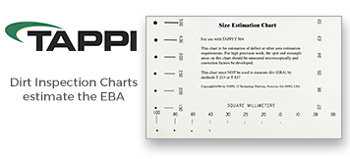 Search
Search
Use the search bar or filters below to find any TAPPI product or publication.
Filters
Content Type
Publications
Level of Knowledge
Committees
Collections
Journal articles

Magazine articles

Continuous digester rapid thinning, TAPPI Journal June 2024
ABSTRACT: Carbon steel continuous digesters built after the early 1980s are fully stress relieved, so stress corrosion cracking has been less of a concern. However, these newer digesters were designed to run modified cooking processes that have turned out to be much more corrosive than those running with conventional cooking. This corrosion is mainly associated with softwood digesters and appears to be flow related. Average corrosion rates of 40 mil/year are possible on the exposed shell between the wash and extraction screens. The corrosion patterns are visually distinct from surfaces in the upper digester and below the wash screens. This paper goes into practical detail on where it occurs, the causes, visual identification, inspection planning and results evaluation, and finally, how to mitigate this damage, which consists of applying a corrosion resistant barrier. Some discussion on dealing with general corrosion throughout the digester is included.
Journal articles

Magazine articles

Experiments and visualization of sprays from beer can and turbo liquor nozzles, TAPPI Journal February 2022
ABSTRACT: Industrial scale swirl-type black liquor nozzles were studied using water as the test fluid. Simple water spraying experiments were found to be very beneficial for studying and comparing nozzles for black liquor spraying. These kinds of experiments are important for finding better nozzle designs. Three nozzle designs were investigated to understand the functional differences between these nozzles. The pressure loss of nozzle 1 (“tangential swirl”) and nozzle 3 (“turbo”) were 97% and 38% higher compared to nozzle 2 (“tan-gential swirl”). Spray opening angles were 75°, 60°, and 35° for nozzles 1, 2, and 3, respectively. Video imaging showed that the nozzles produced sprays that were inclined a few degrees from the nozzle centerline. Spray patter-nation showed all the sprays to be asymmetric, while nozzle 2 was the most symmetric. Laser-Doppler measure-ments showed large differences in spray velocities between nozzles. The spray velocity for nozzle 1 increased from 9 m/s to 15 m/s when the flow rate was increased from 1.5 L/s to 2.5 L/s. The resulting velocity increase for nozzle 2 was from 7 m/s to 11 m/s, and for nozzle 3, it was from 8 m/s to 13 m/s. Tangential flow (swirl) directed the spray 6°–12° away from the vertical plane. Liquid sheet breakup mechanisms and lengths were estimated by analyzing high speed video images. The liquid sheet breakup mechanism for nozzle 1 was estimated to be wave formation, and the sheet length was estimated to be about 10 cm. Sheet breakup mechanisms for nozzle 2 were wave formation and sheet perforation, and the sheet length was about 20 cm. Nozzle 3 was not supposed to form a liquid sheet. Nozzle geometry was found to greatly affect spray characteristics.
Journal articles

Magazine articles

Editorial: Looking forward, looking back, TAPPI Journal January 2022
ABSTRACT: Much like 2020, 2021 was another year of remarkable highs and lows delivered by the COVID-19 pandemic. Vaccines, variants, and infection surges altered the way we behaved personally and professionally last year. As we move into 2022, we are now grappling with health and business concerns from the omicron variant that has overwhelmed hospitals in some areas and contributed to a global supply chain crisis. The ability to adjust has once again become a key skill in adapting to our shifting “new normal.”
Journal articles

Magazine articles

Displacement washing of softwood pulp cooked to various levels of residual lignin content, TAPPI Journal September 2021
ABSTRACT: This study investigates the influence of the degree of delignification of kraft spruce pulp cooked at seven different kappa numbers, ranging from 18.1 to 50.1, on the efficiency of displacement washing under laboratory conditions. Although the pulp bed is a polydispersive and heterogeneous system, the correlation dependence of the wash yield and bed efficiency on the Péclet number and the kappa number of the pulp showed that washing efficiency increased not only with an increasing Péclet number, but also with an increasing kappa number. The linear dependence between the mean residence time of the solute lignin in the bed and the space time, which reflects the residence time of the wash liquid in the pulp bed, was found for all levels of the kappa number. Washing also reduced the kappa number and the residual lignin content in the pulp fibers.
Journal articles

Magazine articles

Editorial: Agility and adaptation in a dynamic business world, TAPPI Journal January 2021
ABSTRACT: As we move into 2020, it's interesting to look back at the research topics that were covered in TAPPI Journal (TJ) the previous year. Members of the TJ editorial board organized diverse special issues on lignin, coating ,forming, and diverse papermaking and biorefinery topics, which are discussed in the following sections.
Magazine articles

Challenges and opportunities for china's paper industry, TAPPI JOURNAL, October 2000, Vol. 83(10)
Challenges and opportunities for china's paper industry, TAPPI JOURNAL, October 2000, Vol. 83(10)
Journal articles

Magazine articles

Editorial: Transform presentations to TAPPI Journal research papers by following basic steps, TAPPI Journal August 2024
ABSTRACT: Very often, important research findings are communicated in presentation form at industry conferences like those TAPPI holds. While this is a great way to highlight your work, it has some limitations when compared to a peer-reviewed TAPPI Journal paper. Presentations are limited to a specific event, while publishing papers in a peer-reviewed journal means that your work becomes part of scientific literature that is available to a broader audience. Also, a research paper allows for a more detailed explanation of the methods, data, and conclusions than the time-constrained format of a presentation.
Journal articles

Magazine articles

Production and characterization of furanic bio-oil from Kawayan kiling (Bambusa vulgaris Schrad ex. Wendl) using molten citric acid in an open system, TAPPI Journal August 2024
ABSTRACT: The burning of fossil fuels poses many threats to the environment. These predicaments have led to a continuous search for alternative sources and production of energy, and biomass is considered the most abundant renewable energy source. In this study, the potential to produce furanic bio-oil from the cellulose of Bambusa vulgaris was explored. The proximate chemical analysis of bamboo was determined using TAPPI Standards. Cellulose was isolated through dewaxing, delignification, and alkaline treatments. The furanic bio-oil was produced by mixing cellulose and citric acid in a solvent-free environment. The effects of the digestion time (120 min, 180 min, and 240 min) on the yield and characteristics were determined. The chemical compositions were determined using Fourier transform infrared (FTIR) spectroscopy and gas chromatography-mass spectrometry (GCMS). B. vulgaris has the following chemical composition: alpha-cellulose (57.42 ± 0.40), holocellulose (78.84 ± 0.52), lig-nin (28.85 ± 0.17), hot water extractives (3.99 ± 0.08), organic extractives (0.77 ± 0.04), ash (4.67 ± 0.02), and moisture (12.98 ± 0.22). The bio-oil yield was affected by the digestion time. The highest yield was obtained at 180 min, followed by 120 min, and 240 min with 88.59%, 59.28%, and 49.96%, respectively. The peaks in the FTIR spectra corresponded to the compounds determined by the GCMS analysis. The dominant chemicals were furans (29.19%), ketones (26.31%), and carboxylic acids (19.26%). The bio-oil obtained at 180-min digestion time has the following properties: sulfur content (0.032 wt%), kinematic viscosity (1.03 mm2/s), specific gravity (0.925), copper corrosion test (No. 1a), pH (2.753), and water content (not detected). Overall, the obtained values from the properties and chemical characterization can be the basis for investigating its performance for biofuel production and utilization. This study is aligned with the Bamboo Industry’s Strategic Science and Technology Plan for the Philippines to develop other value-added products from bamboo and to achieve Sustainable Development Goal 7 (SDG 7) as determined by the United Nations.
Journal articles

Magazine articles

Sulfur makeup in an unbleached kraft pulp mill, TAPPI Journal August 2024
ABSTRACT: Sodium sesquisulfate or “sesqui” (Na3H(SO4)2) is a by-product of chlorine dioxide production at kraft pulp mills. It is typically used for sodium and sulfur makeup in the liquor loop. Mondi Hinton Inc. (MHI) in Hinton, AB, Canada, was converting from bleached to unbleached kraft pulp production and was thus losing this source of makeup. The only option that was readily available as a substitute was sodium hydrosulfide (NaHS), which was cost prohibitive. Other options such as sodium sulfate (Na2SO4), emulsified sulfur, sulfuric acid (H2SO4), and sodium bisulfite (NaHSO3) were compared. The mill concluded that pelletized sulfur plus sodium hydroxide or “caustic soda” (NaOH) was the best option. Laboratory-scale experiments showed that pelletized sulfur dissolved in white liquor (WL). A mill-scale trial revealed that pelletized sulfur added to a causticizer had no adverse impacts on the downstream pressure filters or kiln operation. The sulfur reacted to produce polysulfide upstream of the WL storage tank, giving the liquor an orange hue. This polysulfide appeared to partially degrade into thiosulfate before being fed to the digester. The heavy black liquor (HBL) sulfur:sodium (S:Na) ratio did not change significantly, even though the sulfur/soda addition location was upstream of the original one. In addition, other properties such as liquor heating value and elemental analysis did not significantly change. Due to polysulfide/thiosulfate concentration in the white liquor, it was determined that the carbon steel equipment was at risk for corrosion. During the annual turnaround that occurred eight months after the addition of sulfur was started, the wash zone of the digester showed no signs of thinning/damage. The mill has been running exclusively with pelletized sulfur for 22 months (as of August 2024), realizing significant cost savings compared to the use of NaHS or other sulfur/soda addition options.
Journal articles

Magazine articles

The role of hornification in the deterioration mechanism of physical properties of unrefined eucalyptus fibers during paper recycling, TAPPI Journal February 2024
ABSTRACT: Physical properties of cellulosic paper deteriorate significantly during paper recycling, which hinders the sustainable development of the paper industry. This work investigates the property deterioration mechanism and the role of hornification in the recycling process of unrefined eucalyptus fibers. The results showed that during the recycling process, the hornification gradually deepened, the fiber width gradually decreased, and the physical properties of the paper also gradually decreased. After five cycles of reuse, the relative bonding area decreased by 17.6%, while the relative bonding force decreased by 1.8%. Further results indicated that the physical property deterioration of the paper was closely related to the decrease of fiber bonding area. The fiber bonding area decreased linearly with the reduction of re-swollen fiber width during paper recycling. Re-swollen fiber width was closely related to the hornification. Hornification mainly reduces the bonding area of unrefined eucalyptus fiber rather than the bonding force. The work elucidates the role of hornification in the recycling process of unrefined eucalyptus fibers and the deterioration mechanism of paper physical properties, which will be helpful to control the property deterioration of paper and achieve a longer life cycle.





